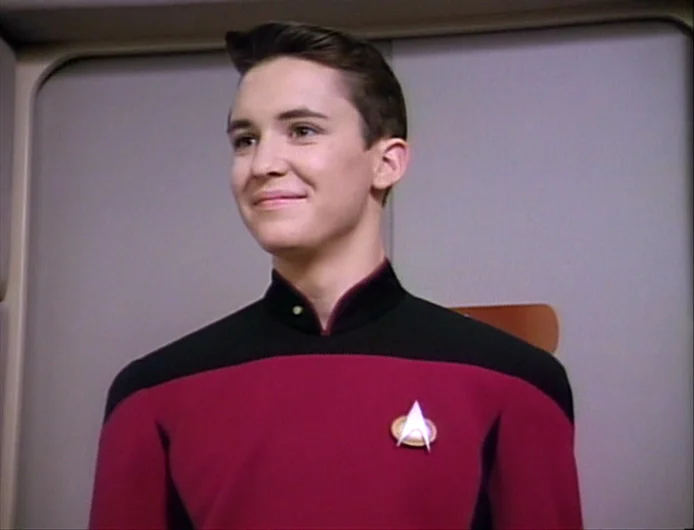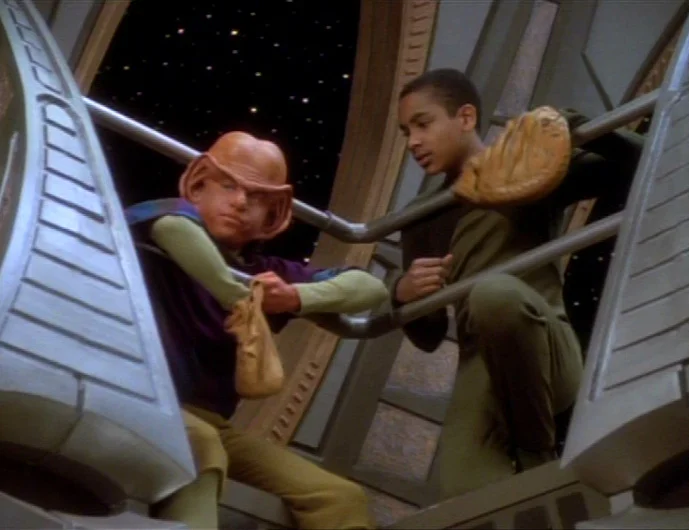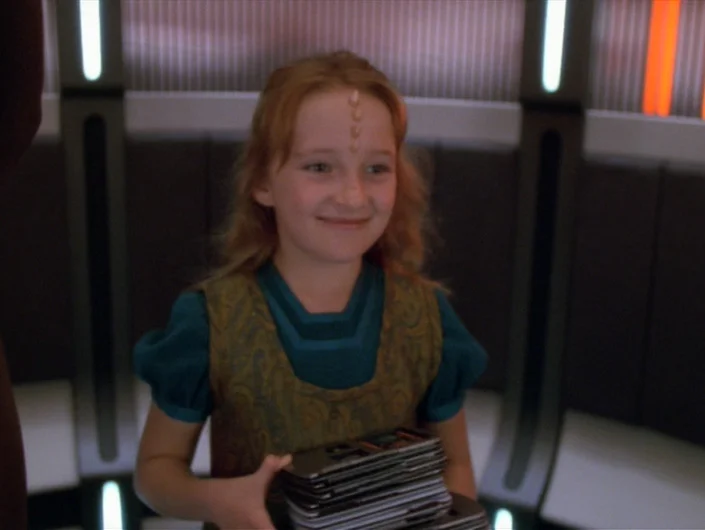by Lorrie Sears
TNG had Wesley Crusher. DS9 had Jake and Nog. Voyager had Naomi Wildman. Children, the literal “next generation,” are a small presence in Star Trek, yet some have a big impact. Whether they are annoying or endearing, the kids of Trek are not easily forgotten. Let’s take a look at those we got to know the most.
Wesley Crusher
Wesley Crusher was the first recurring child character in Trek canon. Beloved by some fans, tolerated by others, his persona was distinct. Whatever anyone may say of him, Wesley’s academic prowess and knowledge of the Enterprise was impressive. But, what he had in brains he lacked in social graces. Frequently showing off what he knew put off many of his shipmates — and the audience.
Wesley was supposedly modeled after Gene Roddenberry, who vehemently defended the character. Roddenberry’s “ideal” child, Wesley was meant to be a role model for young people who watched Star Trek: The Next Generation. Instead, he was brash and ingratiating.
Consider the episode “Where No One Has Gone Before.” In it, Wesley befriends the alien assistant of the man who has come onboard the Enterprise to improve the performance of the ship’s warp engines. When the Starfleet officer’s tinkering with the engines results in the ship being hurled two million light years from its previous position, only Wesley sees that it is not the officer who is responsible for this error. He tries to point out this discrepancy to Riker, who brushes him aside. Later in the episode, it is revealed that Wesley is “special,” like the Traveler, who actually brought the ship to its distant destination, but Wesley must not know it. So, not only does Wesley possess superior intellect to his elder colleagues, but also possesses magical powers. Clearly annoying!
Jake Sisko and Nog
DS9’s Jake and Nog, on the other hand, acted as more typical teen-aged boys on the space station. Their “hang-out” spot on the upper level drove Odo insane, just as teenagers loitering in front of a store makes the business owner shake his fist at them to drive them away. The pranks they pulled, their constant need to try doing what the adults were doing, and their sad attempts at romance all spoke to the intense and loving care the writers put into their characters.
Nog’s decision to join Starfleet is very representative of any teenager’s decision to leave the family life he has known so he can venture out on his own. Despite his family’s reluctance to let him go, they eventually see what an important step this is for Nog and support him, even helping him after he is wounded in the Dominion War in the episode “It’s Only a Paper Moon.”
Jake also took his own turn by deciding to become a writer. He stays and supports his father in his efforts in the war, and in turn becomes a correspondent for the Federation. He gets a first-hand look at war in the episode “…Nor the Battle to the Strong.” He is moved and upset to see death and devastation, much like most people witnessing such an experience.
Naomi Wildman
Voyager’s youngest crewmember, Naomi Wildman, was portrayed in a similarly realistic method. She is only about four Earth years old (even though she looks about eight) when we see her in action in the episode “Once Upon a Time.” The adults in the episode are debating whether to inform the child of her mother’s shuttle crash and subsequent burial under tons of rock. Naomi’s reaction when told of the accident is typical of most children on television. She hides her true feelings by acting out in a parallel storyline. The story resolves itself nicely, but the feeling is left that she is no typical 4-year-old child.
Here again, like Wesley Crusher, Naomi is an adult in a child’s body. She is extremely intelligent and articulate, but unlike Wesley, she seems able to act as a child when necessary and relate to adults as well as children. Naomi is well-adjusted to her situation on a starship lost in space and is not even interested in the prospect of getting back to Earth, as illustrated in the episode “Hope and Fear.” She does come across as knowledgeable, being able to read and process information quickly, but does not try to solve problems on the ship or involve herself in the affairs of the adults.
Final Word
The children who have recurring storylines on Star Trek are always portrayed as intelligent and resourceful. They are a tribute to the adults who are raising them. Whether or not they are obsequious or humorous, Trek’s most recurring child characters are memorable.



